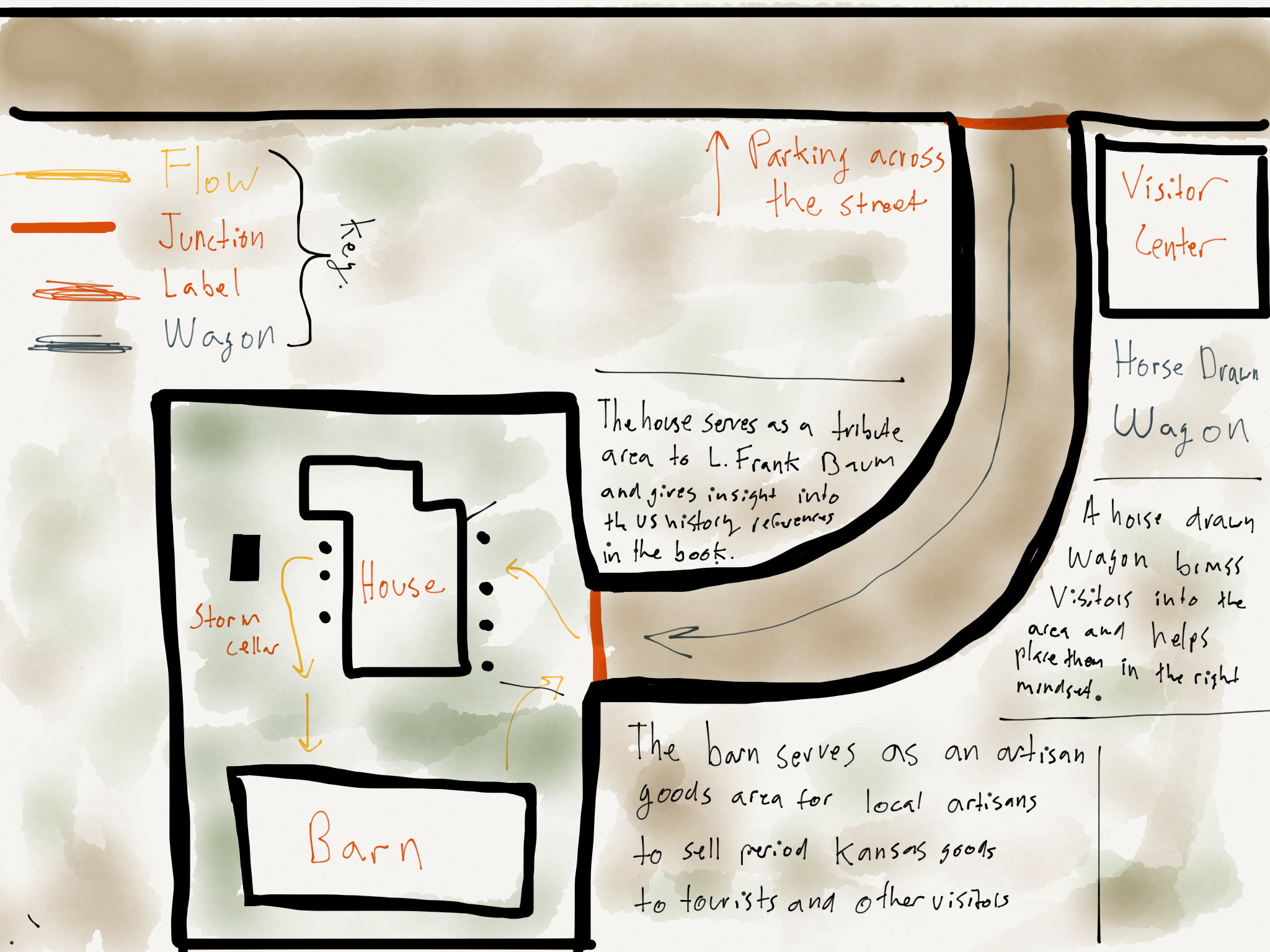
There are lots of class projects in college: papers are due, lab reports must be handed it, dioramas carefully constructed. These assignments are usually an exciting opportunity to apply what you’ve learned in class and show a professor how you really feel about a topic. Recently, I put together an intriguing project I’m sure you’ll all be interested in: I converted Dorothy’s Kansas farmhouse into a house museum for the 21st century.
Now, of course I didn’t actually have the house that flew to Oz in L. Frank Baum’s "The Wonderful Wizard of Oz," but I was tasked with stepping into the shoes of a director of a museum who has just received a gift of the actual house that went to Oz. What I came up was a house museum/ tourist trap.
These are the creative and unusual projects that Museum Studies students like myself get to be involved in. We get to be very creative and imaginative, but the lessons we learn are very applicable to the field.
As guests arrive at my museum, they are brought into a state-of-the-art visitor’s center, which set back from the actual property Dorothy’s house is located on. Here, they can get a bite to eat, rent a tablet for the day, or watch a 35-minute film introducing them to L. Frank Baum’s work. Then, they make their way via horse-drawn wagon to the property where they can check out the exhibits in Dorothy’s house and then buy artisan crafts in the barn nearby. With period activities for kids, in-depth information for parents, and something unique for every guest, my museum appeals to a broad range of visitor types.
Inside Dorothy’s house is where the real fun begins. At "Dorothy’s Museum of America and the West," we ignore the existence of any movies. Instead, we rely only on L. Frank Baum’s series on Oz. In-fact, we use "The Wonderful Wizard of Oz" as a frame to look back on American life in the late 19th and early 20th centuries. For example, the squeaky Tin Man represents the big industry of the northeast. He runs on oil (as many of those companies did) and is searching for a heart (many companies were criticized for not having any heart for their workers). Another example is the Wicked Witch of the West who can be killed with a splash of water. Imagine she represents the western United States, bringing bad fortune to farmers: when water is thrown on her, all the drought she caused goes away.
The museum also looks at how women are represented in the book. The main character is Dorothy, of course, and she does not need help from anyone! She is a good learner in a world where there are few female mentors and in which she must push through a male-dominated culture. She helps three lost souls and defeats a smoke-and-mirrors wizard to bring the reign of the kingdom back under the rightful rule of Princess Ozma. Think of Dorothy as the American Alice from "Alice in Wonderland." Dorothy has no father figures to reconcile with and no prince who rescues her. Instead, she goes out and strikes her own fortune.
Doing the research for my project reminded me of what a fantastic series L. Frank Baum put together. There are so many parts of his work that connect back to the United States and the values that we have put in place. It highlights the good in our society and challenges the bad. I want "Dorothy’s Museum of America and the West" to really exist so that everyone can learn about Dorothy and her adventures and how they reflect American culture.